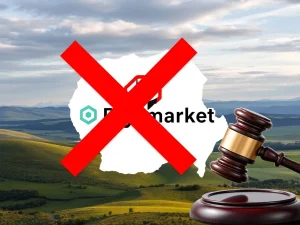Wellgistics Health Achieves Breakthrough with XRP Payment Integration

For those tracking the intersection of blockchain technology and traditional industries, a significant development is underway. Wellgistics Health, a company focused on healthcare infrastructure, is set to integrate XRP into its payment network. This move highlights the potential of digital assets to revolutionize even complex sectors like healthcare, specifically targeting efficiency in the supply chain and financial settlements. This news is particularly relevant for anyone interested in how blockchain healthcare solutions are moving from concept to real-world application.
Wellgistics Health Taps XRP for Faster, Cheaper Transactions
Wellgistics Health announced on May 8 its plan to integrate XRP and related technologies into its payment systems. The goal is clear: streamline transactions between pharmacies, medical suppliers, and prescription medication manufacturers. This network involves numerous participants, making efficient settlements critical.
The company specifically cited the benefits of using XRP for its payment infrastructure:
- **Speed:** XRP transactions offer rapid finality, meaning payments settle much faster than traditional methods.
- **Cost:** Transaction costs are significantly lower, often fractions of a penny, compared to legacy systems like ACH or wire transfers.
- **Efficiency:** Real-time settlement reduces delays and friction in the supply chain.
Brian Norton, CEO of Wellgistics Health, emphasized the strategic importance of this integration:
“I believe that the future winners in healthcare will not be the companies with the biggest buildings, they will be those with the fastest rails, cleanest data, and most efficient platforms. We are betting on infrastructure — not inertia.”
This quote underscores a forward-thinking approach, prioritizing technological infrastructure to gain a competitive edge in the healthcare sector.
Revolutionizing Healthcare Payments with Crypto Integration
The integration of XRP by Wellgistics Health is a prime example of how crypto integration can impact traditional business processes. Reducing cross-border friction is a major benefit. Transactions between businesses in different locations can settle instantly, in real time. This capability is particularly valuable in a global supply chain where suppliers and manufacturers might be located internationally.
Blockchain payment rails and cryptocurrencies like XRP have the potential to significantly lower international transaction costs. This opens up business opportunities that were previously too expensive or complex to pursue. It also potentially facilitates global trade for entities in developing economies by providing a more accessible and cost-effective payment method.
Why Traditional Healthcare Payments Lag Behind
Legacy financial architecture, such as Automated Clearing House (ACH) payments or wire transfers, forms the backbone of current healthcare payments. While reliable, these systems often suffer from:
- Slow settlement times (days for ACH, hours for wires).
- Higher transaction fees, especially for cross-border transfers.
- Limited operating hours (banks close on weekends and holidays).
- Lack of transparency in the transaction process.
The move by Wellgistics Health to adopt XRP highlights a growing recognition that these traditional systems are no longer sufficient for the demands of a fast-paced, globalized industry.
Legacy Systems Push Back Against Blockchain Healthcare Innovation
The rise of cryptocurrencies and blockchain technology presents a challenge to traditional banks and financial institutions. Cryptocurrencies like Bitcoin enable peer-to-peer transactions on decentralized networks, offering censorship resistance and self-sovereignty over funds. While altcoins and stablecoins may involve third parties, they still leverage blockchain rails for faster, internet-based trading without market closures.
This disruption has led to pushback from the legacy banking system. For example, in March 2025, banks reportedly argued against a stablecoin bill (dubbed GENIUS) in the U.S. Congress. Their concern was that stablecoins could erode their market share and potentially displace them from financial services.
U.S. Senator Elizabeth Warren also advocated for provisions in the bill that would require stablecoin firms operating in the U.S. to issue their stablecoins under the oversight of established financial institutions. Despite being initially hailed as a bipartisan effort, the bill failed to advance to a floor vote on May 8, partly due to opposition from some Democratic senators. This demonstrates the ongoing tension and regulatory hurdles faced by crypto innovation as it seeks to integrate with established financial systems and sectors like blockchain healthcare.
What This Means for the Future of Healthcare Payments
The decision by Wellgistics Health to implement an XRP payment solution is a significant step. It demonstrates a willingness within the healthcare industry to explore and adopt new technologies for operational efficiency. While challenges remain, including regulatory clarity and broader adoption, successful integrations like this pave the way for wider use of digital assets and blockchain in streamlining complex industry processes.
This development is worth watching for anyone interested in the practical application of crypto in enterprise settings and the potential for blockchain to transform traditional sectors like healthcare supply chain and payments.
Conclusion: A Step Forward for XRP and Healthcare Efficiency
Wellgistics Health’s integration of XRP into its payment infrastructure marks a notable advancement in applying blockchain technology to the healthcare sector. By leveraging XRP’s speed and low cost, the company aims to create a more efficient payment network for pharmacies, suppliers, and manufacturers. This move not only highlights the practical benefits of digital assets for businesses but also represents a challenge to traditional financial systems. As more companies explore blockchain healthcare solutions, we may see a broader shift towards faster, cheaper, and more transparent payment processes across various industries.









